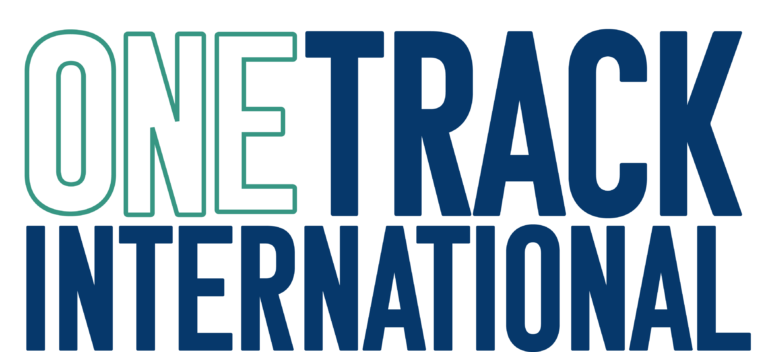INTRODUCTION
Capacity is defined as the organizational and technical abilities, relationships and values that enable organizations, groups, and individuals at any level of society to carry out its functions. Capacity building therefore, is an art of increasing an organization’s ability to fulfil its mission. It is an evidence-driven process of strengthening the abilities of individuals, organizations, and systems to perform core functions sustainably, and to continue to improve and develop over time. Capacity Building (in the orphan-care context) is the practice of assisting and advising small community-based organizations (CBOs) on how to adopt modern orphan-care approaches and how to restructure their programs to be more in-line with the global efforts and Transition to Home approach practised by ONETrack International and our partners.
Crisp, Swerissen and Duckett¹ suggest that there are four approaches to capacity building:
The Bottom-Up, the first approach, entails development of technical expertise to plan, implement and evaluate programmes and is usually achieved through training of members of an organization to equip them with necessary skills and knowledge.
Secondly, the Top-Down approach involves organizational restructuring to improve efficiency in coordination and mobilization of resources.
Partnerships Approach, which is the third method, entails development of partnerships between organizations or groups of people with limited working relationship.
Finally, Community Organizing Approach entails working with the community to transform individuals from passive recipients of services to active participants in the community change process through raising their knowledge awareness and skills.
ONETrack’s Capacity Building Program is aimed at producing an increased community ownership of the “care-giving” process at the community level.
PURPOSE OF DOCUMENT
The goal of this document is to provide a framework to help ONETrack to enhance its “care-giving” program in terms of capacity building. It provides an overarching vision for the strengthening of community-level capacity to respond efficiently and effectively to the Global Orphan Crisis. The Capacity Building Framework is also designed to serve as a reference document to guide the policies and actions of stakeholders in relation to capacity building and development.
LEVELS OF CAPACITY
Capacity in a system context can be divided into three levels. The first being the individual level, secondly the organizational and finally the environmental level.
The first level depicts the will and ability of an individual to set objectives and to achieve them using one’s own knowledge and skill. At the organizational level, capacity refers to anything that will influence an organization’s performance. Finally in terms of the environment, capacity entails conditions necessary to enable the demonstration of capacity at the individual and organizational level. Hence, without the necessary environment, individual and organizational capacities cannot be harnessed and improved, necessitating partners in all locations where ONETrack operates.
SUGGESTED PARTNERSHIP PLAN
Partnership is a fundamental component of an effective capacity building strategy as it plays a crucial role in establishing ownership, support, and sustainability of capacity building interventions.
An organization is as good as the quality of its partners, hence in order for ONETrack to achieve its objectives, suitable partners need to be identified.
All partners must be meticulously trained to ensure they understand and adopt the organization’s vision and mission.
ONETRACK CAPACITY BUILDING FRAMEWORK (CBF)
The Capacity Building Framework (CBF) reflects an integrated and reinforced set of capacity building activities that address the organization and its stakeholders’ capacity needs in achieving the common mission. It provides a clear path for capacity building goals to be realized:
CAPACITY INPUTS AND ACTIVITIES: The inputs include resources dedicated to the capacity building process and the activities entail actions associated with delivering the objectives.
CAPACITY OUTPUTS: These are the tangible and intangible products that result from project activities.
CAPACITY OUTCOMES: The benefits that the capacity building process is designed to deliver.
SUSTAINED PERFORMANCE AND LEARNING: To achieve sustained improvements in capacity and performance, the process must continually focus on supporting the ownership of the process by the partners. This is to ensure that the impact that has occurred is sustainable. ONETrack’s community driven process, involves learning by doing.
ONETRACK IMPACT: The long term consequence of a project.
CONTINUOUS MONITORING AND EVALUATION: ONETrack’s capacity building process will involve the organization and several stakeholders running simultaneous programmes in different location, hence there should be a uniform M&E plan to ensure that the organization’s capacity building is synchronized.
MONITORING AND EVALUATION
Capacity building requires the same rigorous Monitoring and Evaluation as other interventions. Monitoring and Evaluation of capacity building efforts should therefore be programed from the beginning, and should be designed to aid in achieving ONETrack’s mandate of placing orphaned children in supportive households.
ONETrack’s M&E framework can be used to achieve a robust M&E process. (See the Monitoring and Evaluation folder in our Toolkit.)
REFERENCES
Crisp, B.R., Swerissen, H. and Duckett, S.J., 2000. Four approaches to capacity building in health: consequences for measurement and accountability. Health promotion international, 15(2), pp.99-107. (1)
Japan International Cooperation Agency 2004. Capacity Development Handbook for JICA Staff. JICA Task Force on Aid Approaches, March 20, 2004.
Matachi, A. (2006). Capacity Building Framework. UNESCOIICBA. United Nations Economic Commission for Africa, Addis Ababa, Ethiopia. Accessed on 28 August 2018 at http://www.eng.unescoiicba.org/sites/default/files/Capacity%20Building%20framework.pdf
PEPFAR. FY (US President’s Emergency Plan for AIDS Relief) 2012. Capacity Building and Strengthening Framework. Accessed on 4 September 2018 at https://www.pepfar.gov/documents/organization/197182.pdf
UN Climate Change 2018. Capacity-building: Frameworks [online] Accessed on 31 August 2018 at https://unfccc.int/topics/capacity-building/workstreams/framework-for-capacity-building


